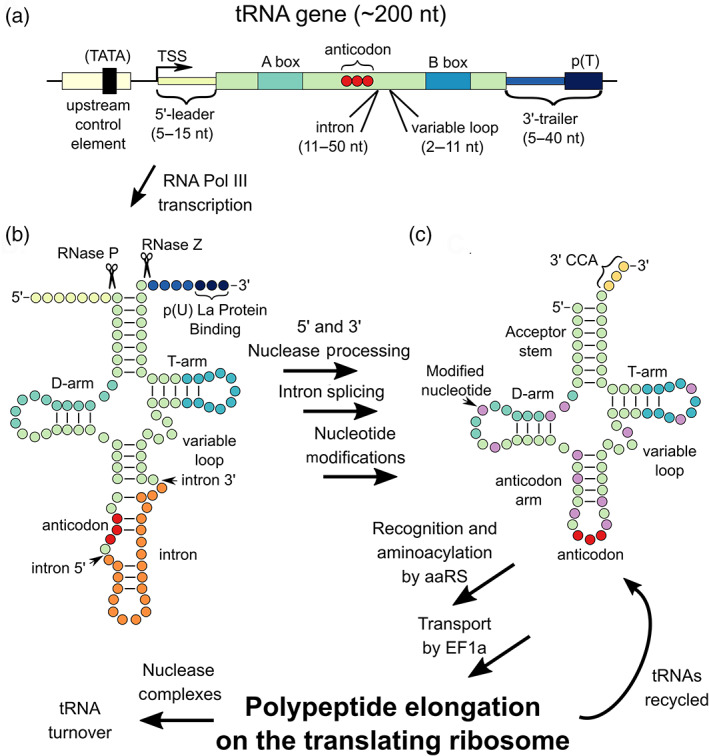FIGURE 2.

Diagram of structural and functional elements of a mammalian tRNA gene, processes involved with mammalian tRNA biogenesis, and tRNA function in translation. (a) Diagram of a typical tRNA gene containing an upstream control element containing a TATA‐box, transcription start site (TSS), 5′‐leader sequence, tRNA sequence containing internal A‐ and B‐box promoter elements, the location of the anticodon, intron, and variable loop, 3′‐trailer, and poly‐thymidine transcriptional terminator (p[T]). (b) Mammalian tRNAs are synthesized as a primary RNA transcript containing 5′‐leaders removed by RNase P, introns spliced out by the SEN complex, and 3′‐trailer removed by RNase Z or other exonucleases. The RNA chaperone La protein binds the poly‐uridine tracts at the 3′ ends of the primary transcript to stabilize the transcript and direct processing. The 3′‐terminal CCA trinucleotide common to all tRNAs is ligated to the pre‐tRNA during processing. Throughout the tRNA maturation process, 10–15 nucleotides are chemically modified by specific modification enzymes. (c) Following processing, tRNAs are aminoacylated by their cognate aminoacyl‐tRNA synthetase (aaRS), transported to the ribosome by EF1a, and finally participate in translation on the ribosome
